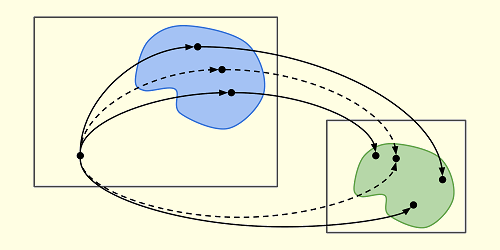Quantifying Uncertainties in Quantum Simulations
In an analog quantum simulation, the behavior of one quantum system is emulated by another, more controllable quantum system. An example is the simulation of a system of many interacting electron spins using a collection of trapped ions. The approach has the potential to uncover complex physics—such as the real-time dynamics of a quantum many-body system—that cannot be revealed by a classical computer. Now Nikita Zemlevskiy and his colleagues at the InQubator for Quantum Simulation at the University of Washington, Seattle, have devised a way to analyze errors in an analog quantum simulation and potentially increase such a simulation’s precision [1].
The new technique focuses on two sources of error that arise from the approximations used to map the quantum system of interest to the analog quantum simulator. In a real-world simulator, these error sources are linked in a complex way, and individually minimizing each error can increase the overall uncertainty of a simulation. Zemlevskiy and his colleagues tackled this problem by first isolating the two error sources and then carefully studying their interplay. This analysis enabled the researchers to finely tune a simulation’s parameters to minimize its overall uncertainty and to maximize its precision.
To demonstrate their approach, Zemlevskiy and his colleagues theoretically studied an analog quantum simulator based on highly excited atoms that emulated various spin systems. These systems are relevant to high-energy and condensed-matter physics. The researchers were able to determine the parameters that minimized the combined uncertainty from the two approximation-error sources. They say that investigating other types of error—such as those associated with a simulator’s inherent imperfections—is needed to understand how to further increase the utility of these simulations.
–Ryan Wilkinson
Ryan Wilkinson is a Corresponding Editor for Physics Magazine based in Durham, UK.
References
- N. A. Zemlevskiy et al., “Optimization of algorithmic errors in analog quantum simulations,” Phys. Rev. A 109, 052425 (2024).




